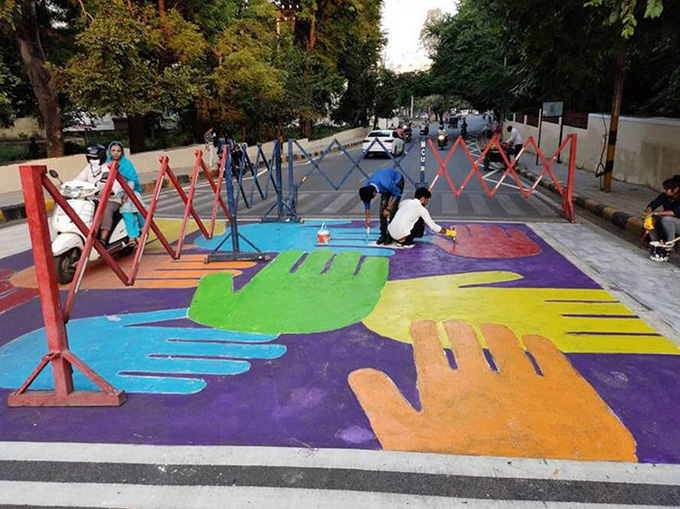
The square is that public space where citizens meet. It is a space to share, talk, exchange and enjoy free time, among other things. Since Ancient Greece, the square has been a meeting space where the common can be dealt with collectively. Although it was a space reserved for men.
Today, the square is, or should be, an accessible place that anyone can enjoy in their spare time. However, the Italian pedagogue Francesco Tonucci raises doubts that this is the case. Tonucci denounces that squares and cities are spaces that are more designed for adults than for children.
Do today’s girls, boys and adolescents have places to meet in your city? The answer is yes, or at least they should. Children have meeting spaces where they can enjoy their rights as citizens, but they could and should have more and better ones. Above all, getting involved in its creation and improvement from the beginning.
Meeting space
The city is a space of coexistence. Some of its functions are socialization, the development of culture and the formation of citizenship. Experiences and experiences that favor the construction of democratic values take place in it.
Childhood is linked to its city to the extent that it enjoys and is involved in it. The city for children is more than just a space to live and travel. It is a place to meet, play, grow and participate. But above all, where to have fun, feel safe and feel well treated.
Save the obstacles
On some occasions, adult overprotection is an obstacle for children to enjoy the space. At other times, the persistent obstacle is the preference given to private vehicles over the needs of people.
Often, certain economic interests take precedence over basic needs such as games for children. It is no coincidence that square meters of terraces predominate in squares and certain children’s games are prohibited.
But the city must guarantee that children have quality spaces to meet. It is essential to introduce urban improvements that place children in the city center. It is also essential that the city guarantees that all boys and girls have meeting spaces where they can enjoy their free time.
In which spaces do children meet?
Childhood gathers around the spaces where they spend a large part of their time, such as their school or their home. In these meeting spaces, children seek to disconnect from the obligations and routines that occupy most of their hours.
For this reason, it is usual that when they leave school they have a meeting point where they can talk about their things, develop their games, make plans or devise new experiences. They tend to be spaces that avoid the adult gaze. They should be, although this is not always the case, spaces away from noise, smoke-free, with lighting, rich in vegetation, with fountains and litter bins, with urban furniture that makes it easier for them to enjoy together.
The type of activity that they decide to develop in that time will mark the choice of space. In these meeting spaces, it is essential that links with peers be strengthened, their autonomy be guaranteed, freedom of movement be promoted, their imagination be increased and their citizen identity be reinforced. In any case, boys and girls must feel that the city is for them .
Improve the spaces where to interact
There are more and more experiences that involve boys and girls in improving their meeting spaces. These experiences share a fundamental premise: that children are active citizens , capable of taking part in improving their environment.
1. The “open patios” : the school patio is used as a meeting point at the weekend and during vacation periods. The school is established as a social and educational space where you can have a good time outside of school hours. This initiative expands the map of meeting spaces. Sometimes it is accompanied by the incorporation of a professional. This figure will ensure to promote positive relationships between equals, promote diverse educational experiences and take care of the facilities.
2. The “playable city” : expands the play opportunities offered by the city to children and proposes experiences for their development and growth. The entire city is conceived as a game setting.
3. Mapping of leisure spaces: the boys and girls place the meeting spaces they use on a map of their city or neighborhood. The collaborative identification and analysis process favors knowing which spaces are really important to them. Through conversation, possible improvements are identified and responsibility for keeping them in optimal condition is promoted. Boys and girls are invited to make a participatory diagnosis from which to seek solutions together.
4. City co-creation spaces : the co-design methodology is participatory processes that involve children in the definition of spaces based on their uses. Some of the most frequent experiences have to do with the co-design of playgrounds or with school environments.
5. The municipal councils for childhood and adolescence_ : these organized groups of girls and boys meet with some regularity to address issues in their city that they consider could be improved. They collaborate with the government team so that the city is a space that responds to their needs. It is one of the ways of doing collaboration between the municipality and children for the definition of the city as a space for relationships.
Children and adolescents can be active participants in the definition of their spaces of coexistence and relationship. The opportunities to get involved in these practices allow them to increase their experience as citizens committed to their environment and their community. In these experiences they increase their civic competences and their autonomy. At the same time they contribute to improve their city.
Author Bio: Ana Maria Novella Chamber is in the Department of Theory and History of Education. Faculty of Education at the University of Barcelona
